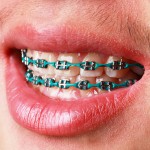
Maintaining good oral hygiene during orthodontic treatment is important in order to avoid adverse effects on gingival tissues and reduce the risks of enamel demineralisation. There is some systematic review evidence from general health care to suggest that text messaging may improve preventive behaviours (Vodopivec-Jamsek et al 2012). The aim of this study was to determine if there is a difference in oral hygiene between orthodontic patients who receive direct text messages and those who do not.
Methods
Fixed appliance orthodontic patients aged 10-18 yrs of age with at least 6 months of remaining treatment and mobile phone access were eligible for inclusion. Patients were assigned either receive automated text messages (test) or not (control) Patients were disclosed and photographs taken of teeth for plaque assessment using planimetry and digital analysis software, at baseline, 4 and 12 weeks. Plaque was recorded and determined as a percentage of the overall facial area of the tooth and averaged.
Both groups watched a video presentation of toothbrushing with a conventional toothbrush, using the Bass technique. The test group received text messages (max 160 characters) 2-3 times per week for 4 weeks (12 texts in total). They then received 1 test per week for 8 weeks.
Results
- 50 patients were recruited 25 per group
- Data was available for 40 patients (19 in test group, 21 in control).
- There was a statistically significant improvement in plaque coverage in the test group at 4 and 12 weeks.
Conclusions
The authors concluded
The sending of text messages directly to orthodontic patients reminding them of the importance of oral hygiene is an effective way to improve plaque removal from teeth over a 3-month period.
Commentary
This is a small but interesting study of the effect of text messaging on plaque control during orthodontic treatment. The study is also short term and suffers from the fact that data was only available for 80% of the initial group. Mean values a presented for both groups and a statistical benefit is shown. Whether this is of any clinical important will require additional larger and higher quality trials to provide definitive answers.
Links
Bowen TB, Rinchuse DJ, Zullo T, DeMaria ME. The influence of text messaging on oral hygiene effectiveness. Angle Orthod. 2014 Oct 24. [Epub ahead of print] PubMed PMID: 25343689.
Vodopivec-Jamsek V, de Jongh T, Gurol-Urganci I, Atun R, Car J. Mobile phone messaging for preventive health care. Cochrane Database of Systematic Reviews 2012, Issue 12. Art. No.: CD007457. DOI: 10.1002/14651858.CD007457.pub2.

Plaque control:text messaging may have a positive effect http://t.co/PbwZ7vfz8i
[…] Dental Elf – 4th Nov 2014 – Plaque control during orthodontic treatment: study suggests … […]